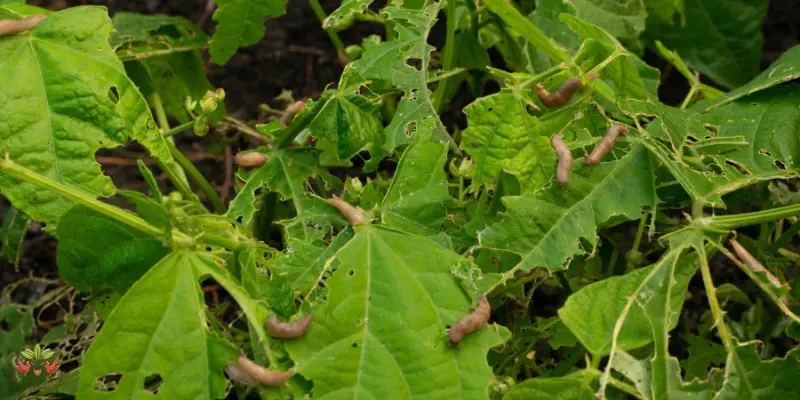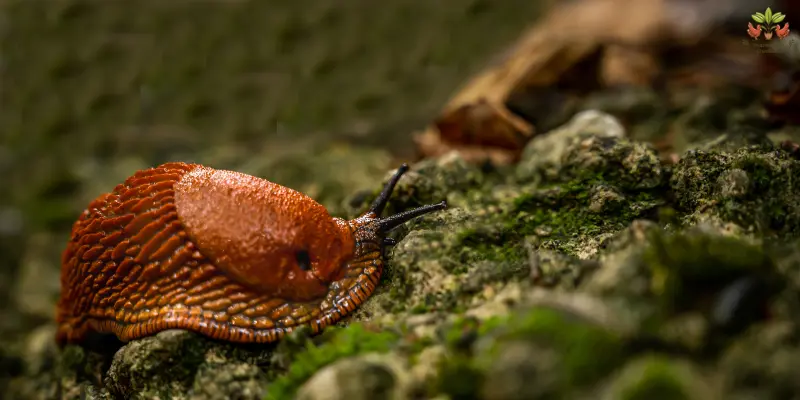Slugs have holes on the side of their bodies called pneumostomes, which they use for breathing. This unique adaptation allows the slug to take in oxygen from the air through a lung-like chamber inside its body.
The slime that covers a slug’s body serves multiple purposes, including absorption of water and preventing it from sliding down vertical surfaces. Slugs also have tentacles that they use for smelling their surroundings, and they have thousands of teeth to help them consume their food.
Overall, slugs are fascinating creatures with unique adaptations that allow them to survive in their environments.
Why Do Slugs Have Holes?
Slugs, commonly mistaken for snails without shells, have a fascinating feature known as slug holes. These holes play an essential role in the life of a slug and serve a specific purpose. In this article, we will explore the purpose of slug holes and delve into the anatomy behind this intriguing characteristic.
The Purpose Of Slug Holes
Slugs have holes, and its known as pneumostomes, are breathing holes through which slugs obtain oxygen. Unlike humans who breathe through their noses or mouths, slugs rely on these unique holes to respire. The presence of these holes enables slugs to absorb oxygen from the air and expel carbon dioxide.
These breathing holes are located on the right side of a slug’s body, often near the mantle. The mantle acts as a protective structure surrounding the vital organs of the slug, and within this region lies a lung-like sac connected to the pneumostome.

Understanding The Anatomy Of Slug Holes
Now that we know the purpose of slug holes, let’s take a closer look at their anatomy. The pneumostome is a distinguishing feature in slugs, providing a direct path for the exchange of gases with the atmosphere. It acts as a portal for oxygen to enter the slug’s body and for carbon dioxide to exit.
The presence of a lung-like sac connected to the pneumostome creates an internal structure that mimics the function of a lung. This unique adaptation allows slugs to breathe air despite their primarily aquatic nature. By opening and shutting the pneumostome, slugs regulate the exchange of gases and maintain the necessary oxygen levels for survival.
It’s important to note that slugs have holes are species-specific. Different species of slugs may have variations in the placement and appearance of these breathing holes, but their functionality remains the same.
In conclusion, slugs have holes that serve as crucial respiratory structures that enable slugs to breathe air. Understanding the purpose and anatomy of these holes offers insight into the remarkable adaptations of these slimy creatures.
Fascinating Facts About Slugs
- Slugs have fascinating adaptations, including the presence of holes on their bodies called pneumostomes, which they use for breathing. Additionally, slugs leave a unique scent trail and their slime absorbs water, making it difficult to wash off.
- Fascinating Facts About Slugs is Sensory Abilities. Did you know that slugs have an incredible sense of smell? These slimy creatures use their tentacles to detect scents in the air, helping them locate food and potential mates.
- Slugs also have the ability to detect vibrations in the ground, allowing them to sense approaching predators or other nearby slugs. This heightened sensory perception enables them to navigate their environment and find their way back to their cozy hiding spots.
- Slug Reproduction and Life Cycle Slugs have a unique method of reproduction called hermaphroditism, which means they possess both male and female reproductive organs. This allows them to mate with any other slug they encounter. During mating, slugs engage in a fascinating behavior called apophallation, where they chew off each other’s reproductive organs. The reason behind this bizarre behavior is still unknown to scientists, but it is believed to be a competitive strategy to ensure successful fertilization. After mating, slugs lay eggs in moist soil or hidden crevices. These eggs hatch into juvenile slugs called “slugslets.” Interestingly, slugs do not go through a larval stage like many other mollusks. Instead, they resemble miniature versions of their adult selves right from the start. These baby slugs go through a series of growth molts before reaching their full size, ready to explore the world on their own.
- Slug Adaptations and Survival Strategies Slugs have developed several remarkable adaptations and survival strategies to thrive in their environments. One of the standout features is their slime, which serves multiple purposes. Slugs produce this mucus-like substance to help them move smoothly over various surfaces. Additionally, their slime acts as a protective barrier, preventing dehydration and deterring potential predators. Plus, the slime contains fibers that help slugs cling to vertical surfaces, defying gravity as they crawl along walls and ceilings.
- Another interesting adaptation of slugs is their ability to regenerate lost body parts. If a slug encounters a predator or gets injured, it can regenerate a new body part, such as a tentacle or even part of its body. This incredible regenerative ability allows slugs to recover from injuries and continue their journey in search of food and shelter.
In conclusion, slugs possess remarkable sensory abilities, unique reproductive strategies, and fascinating adaptations that contribute to their survival. From their excellent sense of smell to their ability to regenerate body parts, these slimy creatures continue to captivate scientists and nature enthusiasts alike. So the next time you come across a slug in your garden or on a rainy day stroll, take a moment to appreciate the incredible characteristics that make them such fascinating creatures.
Frequently Asked Questions On Why Do Slugs Have Holes Plus Other Fascinating Slug Facts
What Are Some Interesting Facts About Slugs?
Slugs have their own unique scent trail and their slime is water-absorbent. The slime also contains fibers that prevent them from sliding down vertical surfaces. Slugs smell with their tentacles. They have a breathing hole called a pneumostome in their mantle, which acts like a lung.
Why Do Slugs Have Holes In Them?
Slugs have holes in them called pneumostomes which they use to breathe. These holes are connected to a lung inside their mantles and allow them to take in oxygen from the air.
What Makes Slugs Unique?
Slugs are unique because they have a breathing hole called a pneumostome in their mantle, which allows them to take in oxygen from the air. They also have slime that helps them find their way home, absorbs water, and contains fibers that prevent them from sliding down vertical surfaces.
Slugs smell with their tentacles.
What Are 3 Interesting Facts About Snails?
Three interesting facts about snails are:
1. Snails can have thousands of teeth, which they use to scrap and grind their food.
2. Snails have tentacles that they use for both touch and smell.
3. Snails are able to hibernate for extended periods of time when conditions are unfavorable.
Conclusion
Slugs have holes because it is their means of breathing. These holes, called pneumostomes, are located in their mantle and act as their lungs to take in oxygen from the air. Slugs also have unique abilities such as leaving scent trails, producing slime that absorbs water, and using their tentacles to smell.
These fascinating facts remind us of the incredible adaptability and diversity found in the natural world.


![Terrifying Trend: Why Do Roosters Chase Humans? [2024]](https://plantsandchickens.com/wp-content/uploads/2024/02/why-do-roosters-chase-humans-4.webp)


Leave a Reply